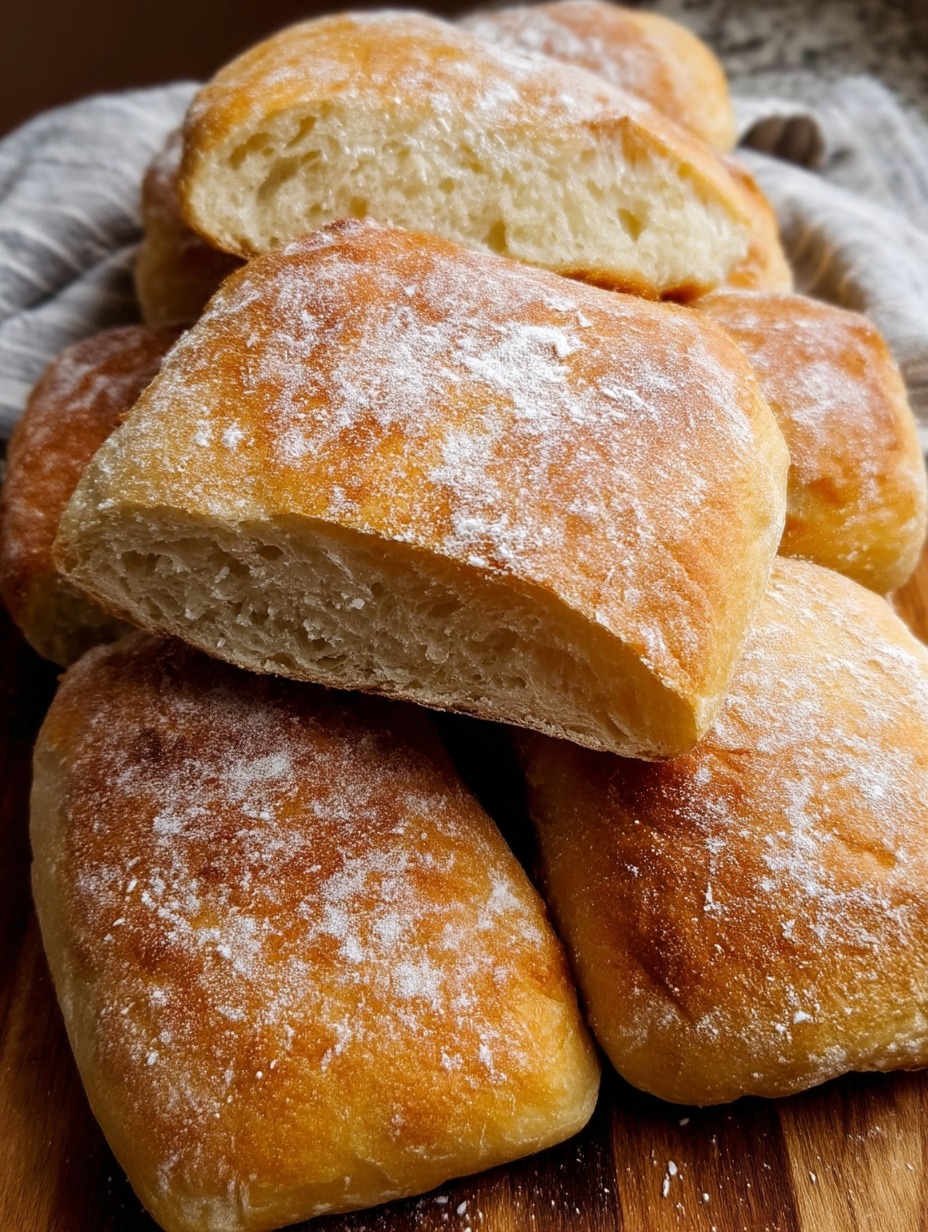Why You’ll Love This Recipe
No kneading required – Just stretch and fold the dough in the bowl.
Real bakery results – Golden crust, chewy interior, and open crumb.
Minimal ingredients – Flour, water, salt, and yeast. That’s it.
Flexible timing – Most of the process is hands-off, and you can stretch it across two or even three days.
Once you try it, you’ll understand why it’s such a staple in Italian kitchens.
Tools That Help (But Aren’t Required)
Bench scraper – Makes handling sticky dough easier.
Kitchen scale – Helps measure ingredients accurately for consistent results.
Parchment paper – Keeps the dough from sticking to the pan.
Spray bottle or roasting pan – For creating steam in the oven, which gives you that crispy crust.
Pro Tips Before You Begin
Use bread flour if you can—it makes the texture chewier and more structured.
Don’t add extra flour to the dough itself. Sticky is good.
Be gentle. The dough needs to be handled carefully so you don’t lose those lovely air pockets.
Bake with steam. Adding ice to a hot pan in the oven creates steam, which helps the crust form properly.
Ways to Serve It
Homemade ciabatta is incredibly versatile. Here are just a few ways to enjoy it:
Dipped in olive oil and balsamic vinegar
Sliced for paninis or hearty sandwiches
Toasted and topped with garlic butter
Cubed into croutons or added to salads
Used for breakfast casseroles or egg strata
Leftovers? They make excellent crostini.
Homemade Ciabatta Bread
Prep Time: 13 hours (includes fermentation and resting)
Cook Time: 25 minutes
Total Time: About 14 hours
Yield: 8 rolls or 2 small loaves
